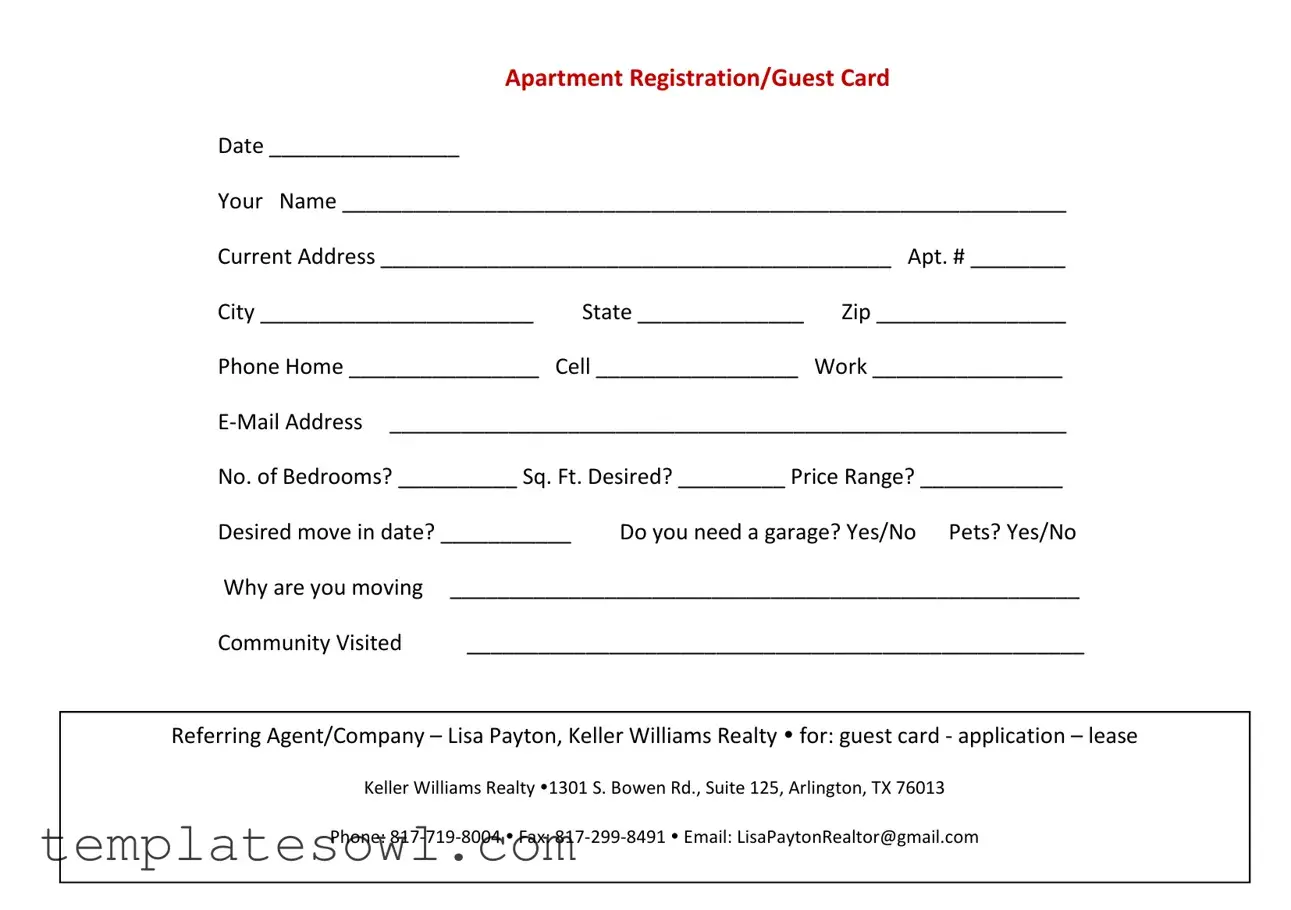What is the purpose of the Apartment Card form?
The Apartment Card form serves as an initial registration tool for individuals interested in leasing an apartment. It helps property managers gather essential information about potential tenants and their housing needs. This form creates a streamlined process for both prospective tenants and property managers.
What information do I need to provide on the form?
You will need to enter your name, current address, contact phone numbers (home, cell, work), and email address. Additionally, the form requires details about your desired apartment, including the number of bedrooms, square footage, price range, move-in date, and whether you need a garage. You will also specify your pet situation and reasons for moving.
Who should I contact if I have questions about the form?
If you have questions regarding the Apartment Card form, please reach out to the referring agent, Lisa Payton at Keller Williams Realty. You can contact her by phone at 817-719-8004, via fax at 817-299-8491, or by email at LisaPaytonRealtor@gmail.com.
What if I don't have all of the required information ready?
It is understandable if you do not have all the information readily available. You may complete the form with the information you do have and submit it. Make a note of any missing information, and follow up with the necessary details later if required. The goal is to initiate the process as smoothly as possible.
Can I submit the Apartment Card form electronically?
The process for submitting the Apartment Card form depends on the policies of the property management office. Some may allow electronic submissions via email, while others may require physical submissions. Check with your referring agent or the management office for clarification on their submission procedures.
Is there any cost associated with filling out the Apartment Card form?
There is no cost associated with filling out the Apartment Card form. This form is merely a tool to help you express your interest in an apartment. However, be mindful that additional fees may apply later in the leasing process, such as application fees or security deposits.
What happens after I submit the form?
After you submit the Apartment Card form, property management will review your information. They may contact you for further details or to arrange a tour of available apartments that meet your criteria. This is a vital step in moving forward in the leasing process.
How do I update my information if my circumstances change?
If your circumstances change after you submit the Apartment Card form, simply reach out to your referring agent or the property management office. They will guide you on how to update your information. Prompt communication is important to ensure that your housing needs are accurately reflected.
Is this form a rental application?
No, the Apartment Card form is not a rental application. It is an initial registration that allows property managers to gather preliminary information about potential tenants. A formal rental application will be required later in the process to complete the leasing procedures.
What if I don't have a referring agent?
If you do not have a referring agent, you can still fill out the Apartment Card form. However, it may be beneficial to reach out to property management directly for assistance. They can provide guidance and answer questions without the need for a referring agent.

